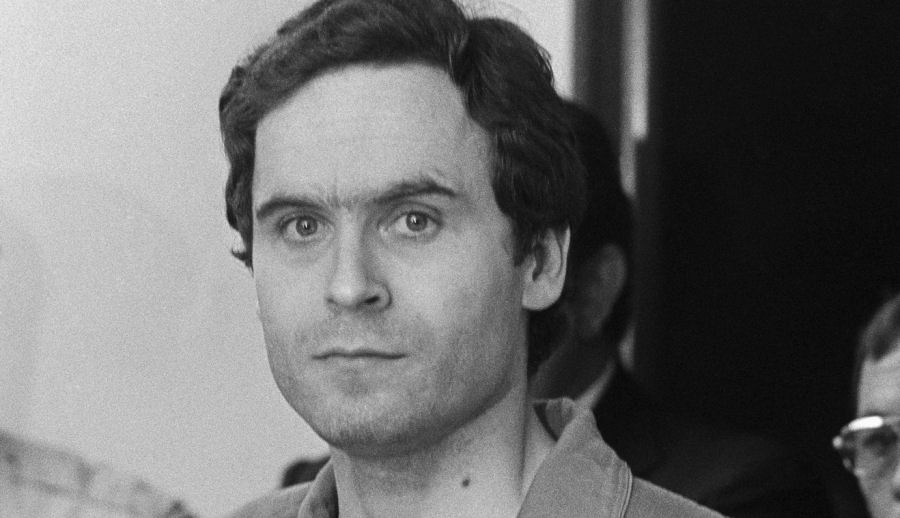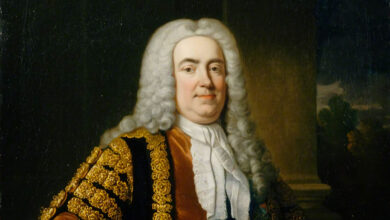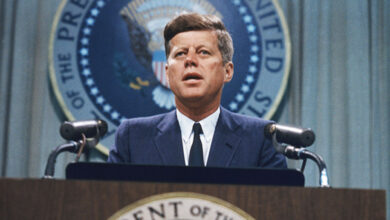
Podcast: Play in new window | Download
Subscribe: Spotify | Amazon Music | Youtube Music | RSS
“We all go a little mad sometimes.” – Ted Bundy
Ted Bundy was a serial killer who was executed in 1989 for the rape and murder of young women and girls during the 1970s. Before he was put to death in the electric chair at Florida State Prison, he confessed to 30 murders but the true number will likely never be known.
Theodore Robert Cowell, later to be known as Ted Bundy was born on 24 November 1946 in Burlington, Vermont, USA. He was born at the Elizabeth Lund Home for Unwed Mothers, as his mother, Eleanor Louise Cowell, who was known as Louise was not married at the time, having been seduced by a war veteran called Jack Worthington. He was brought up by Louise’s parents with him thinking that she was his older sister. He later stated that he resented his mother for not telling him about his real father.
In interviews, Bundy spoke warmly of both his grandparents and said that he identified with and clung to his grandfather even though he was a violent man who beat his mother and was cruel to animals.
In 1950 Louise, having changed her surname to Nelson, took her son and went to live with cousins in Tacoma, Washington, where, the following year she met Johnny Culpepper Bundy who was a hospital cook. Johnny adopted Ted when the couple married later that year and they went on to have four more children, and although Johnny tried to include Ted in family activities, Ted was always somewhat distant. It isn’t clear what his interests were as a child although it is known that he was a keen downhill skier.
His classmates at Woodrow Wilson High School later stated that Bundy was liked and was well-known although Bundy himself later said that he didn’t know what made people want to be friends.
Ted Bundy graduated from high school in 1965 and went to the University of Puget Sound before switching after twelve months to study Chinese at the University of Washington. During his time there, he became romantically involved with a classmate who is usually referred to by the pseudonym Stephanie Brooks, before dropping out of university the following year. He took several low paid jobs and volunteer work, but shortly afterwards, Brooks ended the relationship. A devastated Bundy left Washington and travelled to Colorado, Arkansas and Philadelphia before returning to Washington in 1969 where he met divorcee Elizabeth Kloepfer. The couple formed a relationship, which, although stormy lasted into the late 1970s.
Bundy decided to re-enrol at UW, this time majoring in psychology. Graduating in 1972, he was accepted into law school the following year. During this time, he also managed to rekindle his relationship with Brooks behind Kloepfer’s back and the pair even discussed marriage but in 1974 he abruptly ended the relationship. Brooks speculated that he had planned the whole thing as a form of vengeance for their 1968 break up. In April of the same year, Bundy stopped attending law school as women started to disappear in the North West United States.
It is not possible to know for sure when Ted Bundy started to kill women as his recounting of events was different for every person who interviewed him. It is possible that he started killing as a teenager but the first documented cases took place in 1974 when he was 27 years old with women disappearing at the rate of about one per month. By his own admission, he had by that point managed to develop the skills necessary to avoid detection, leaving the police with very little evidence to go on. As more and more women disappeared though, several came forward as witnesses stating that they had been approached by a man with a sling on his arm who needed help loading items into his car, which was a tan or beige coloured Volkswagen Beetle.
Whilst this was going on, Ted Bundy was working as the Assistant Director of the Seattle Crime Prevention Advisory Commission where he even wrote a pamphlet for women about rape prevention. He also later worked at the Department of Emergency Services which was involved in the search for missing women. It was there that Bundy met Carole Ann Boone who would later play an important role in his life.
As more witnesses came forward, the police felt more confident about releasing details of the man they were looking for and posted flyers throughout the Seattle area with a composite sketch appearing in newspapers and on television. Kloepfer called the police and told them that she suspected that Bundy was the killer, but the police were getting so many calls that hers was never taken seriously. Then, the murders in the Pacific Northwest suddenly stopped. The police didn’t stop investigating though and started to compile a database, one of the first of its kind, of information received about each event.
In August 1974 Bundy left Kloepfer in Seattle and moved to Utah after receiving an acceptance letter from the University of Utah Law School, but when he arrived there, he found that he couldn’t keep up with the other students in the class. Soon after, the local police started to get reports of young women going missing in the area.
In November, Kloepfer called the police again after reading that women were going missing near Salt Lake City and this time, she was interviewed by Detective Randy Hergesheimer of the Major Crimes Division. Unfortunately, though, witnesses that had previously come forward failed to identify Bundy from photographs and there was no credible forensic evidence linking him to the crimes.
In 1975, although still based in Utah, Bundy moved his activities to Colorado and women started to go missing from popular skiing destinations such as Snowmass and Vail.
Back in King County in Washington State, the police had entered their information into the database and had asked the machine to look for coincidences and out of what could have been thousands of potential suspects in the area it listed only 26. One of them was Ted Bundy. Whilst the machine was working, the police manually reviewed their best suspects and Bundy appeared on that list as well.
On 16 August 1975, Bundy was arrested after being stopped by the Utah Highway Patrol. His car was searched and it was found to contain various paraphernalia that could be used to commit burglaries. The police searched Bundy’s home but didn’t find enough evidence to detain him so he was released, although he was put under 24-hour surveillance.
The following month, Ted Bundy sold the Beetle and the police took the opportunity to acquire and examine it, finding hair samples and other evidence that linked the car and therefore Bundy to the disappearance of several women.
In October, Bundy was picked out of a lineup by several witnesses, but he could only be charged with aggravated kidnapping and criminal assault. He was released on $15,000 bail but was kept under surveillance. At his trial, Judge Stewart Hanson Jr. found Bundy guilty of kidnapping and assault and sentenced him to between 1 and 15 years in prison. In October he was found with plans and equipment to help him escape and spent several weeks in solitary confinement. Later in October, the Colorado authorities charged Bundy with the murder of Caryn Campbell and he was transferred to Aspen in January 1977.
In June, Bundy attended a preliminary hearing in Aspen where he elected to serve as his own attorney, which afforded him the privilege of having his handcuffs and shackles removed. He made the most of the situation and escaped from the courthouse, going on the run for six days before being recaptured. He then escaped for a second time and was in Chicago before the Glenwood Springs jail staff had discovered he was missing. From there he flew to Florida where he sustained himself through petty theft and shoplifting.
On 15 January 1978, Bundy broke into Florida State University’s Chi Omega sorority house and attacked four young women while they slept, killing two of them. The police estimated that the attacks all took place during a 15-minute period within earshot of 30 potential witnesses who heard nothing. As Bundy fled the scene, eight blocks away he attacked another student leaving her with life-changing injuries. After he attacked and killed 12-year-old Kimberley Dianne Leach and suspecting that the police were closing in on him, Bundy left Tallahassee and drove across Florida in a stolen car. He was stopped by Pensacola police near to the Alabama state line and was arrested after an initial struggle by officer David Lee who had no idea that he had just arrested one of the FBI’s Ten Most Wanted Fugitives.
Bundy stood trial in Miami for the Chi Omega murders in June 1979. It was covered by 250 reporters and was the first trial in history to be televised nationally in the USA. He was found guilty on 24 July and was sentenced to death. Six months later, he was found guilty after a second trial of the murder of Kimberley Leach and was again sentenced to death. A third death sentence was delivered on 10 February 1980 and it was this sentence that would eventually be carried out nine years later.
Ted Bundy was executed in the Raiford electric chair at 7.16 am EST on 24 January 1989. The night before his execution, Bundy admitted to 30 murders, but it is unknown what the real total is. It is estimated that there could be over 70 more victims who are unaccounted for.
Podcast: Play in new window | Download
Subscribe: Spotify | Amazon Music | Youtube Music | RSS




